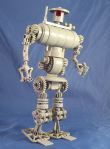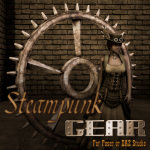Jacqui Murray's Blog, page 146
September 8, 2014
Sunflowers for Tina
September 5, 2014
Book Review: Last Stand of the Tin Can Sailor
 The Last Stand of the Tin Can Sailors: The Extraordinary World War II Story of the U.S. Navy’s Finest Hour
The Last Stand of the Tin Can Sailors: The Extraordinary World War II Story of the U.S. Navy’s Finest HourMy rating: 5 of 5 stars
This should be required reading for all those who serve in the Navy or want to serve in the Navy–on or above the sea. That’s all the USNA-wanna-bes. Which is why I’m reposting it from a couple of years ago.
It is the story of Taffy 3, a WWII force of America’s smallest ships–Destroyers and Destroyer Escorts. Tasked with protecting the carriers that were part of MacArthur’s return to the Philippines, they ended up the front line against Japan’s largest collection of battleships and the island nation’s last gasp to turn the tides of WWII. No one expected these tiny ships–therein lies the name, ‘tin cans’–to face down Japan’s massive force of light cruisers, heavy cruisers and carriers. In fact, one of the Destroyer captains said, “This will be a fight against overwhelming odds, from which survival cannot be expected. We will do what damage we can.”
And damage they did. They flitted in, their tiny guns booming and flashing. When they had no more torpedoes (each only carried 10), they charged anyway, shooting their small caliber deck-mounted guns. Wave after wave of aircraft buzzed the Japanese ships, American pilots continuing to attack even when their bombs ran out, hoping to frazzle and frighten the enemy. Despite the bravado, the sailors knew they had no chance to stop such a superior force. They could do little but pray for the best, understanding if the enemy got past them, they would get to the carriers.
But this isn’t as much an historic account of the Battle of Leyte Gulf–that can be found in other books–as it is the story of the men who fought, their all-American roots, their unquestioning commitment to fight the good fight, their bottomless courage. They joined the war in response to Pearl Harbor, giving their brains and muscle to defend what was most important to them, and ended up giving their lives.
Hermon Wouk wrote of this battle, “The vision of Sprague’s (the commander of Taffy 3)three destroyers–the Johnston, the Hoel, and the Heermann–charging out of the smoke and the rain straight toward the main batteries of Kurita’s battleships and cruisers, can endure as a picture of the way Americans fight when they don’t have superiority. Our schoolchildren should know about that incident, and our enemies should ponder it.”
When the battle ended, Japan lost almost 10,000 men while America lost 800 brave sailors, three of the tin cans and only one of our carriers–the only American carrier ever sunk in a naval battle. When the tiny ships sank and the sailors tredded water, fought off the sharks who smelled their blood, one incident stood out: A Japanese heavy cruiser approached. The stranded sailors didn’t know if they’d be killed or captured. Instead, as the ship sailed by, the Japanese lined the side and saluted the bravery of their enemy.
If you are an American soldier or the parent of one, read this to see what will be expected of him or her. If you are our enemy, read this and beware.
More military book reviews:
Jacqui Murray is the author of dozens of books (on technology in education) as well as the popular Building a Midshipman , the story of her daughter’s journey from high school to United States Naval Academy. She is webmaster for six blogs, an Amazon Vine Voice book reviewer, a columnist for Examiner.com and TeachHUB, Editorial Review Board member for Journal for Computing Teachers, monthly contributor to Today’s Author and a freelance journalist on tech ed topics. In her free time, she is editor of technology training books for how to integrate technology in education. Currently, she’s editing a techno-thriller that should be out to publishers next summer.
Filed under: book reviews Tagged: wwii


September 3, 2014
#IWSG–When does technical become boring
 This post is for Alex Cavanaugh’s Insecure Writers Support Group (click the link for details on what that means and how to join. You will also find a list of bloggers signed up to the challenge that are worth checking out like Kate and Rebecca who inspired me to begin). The first Wednesday of every month, we all post our thoughts, fears or words of encouragement for fellow writers.
This post is for Alex Cavanaugh’s Insecure Writers Support Group (click the link for details on what that means and how to join. You will also find a list of bloggers signed up to the challenge that are worth checking out like Kate and Rebecca who inspired me to begin). The first Wednesday of every month, we all post our thoughts, fears or words of encouragement for fellow writers.
This month’s insecurity – I put a lot of science in my stories because it is so gal-darn amazing. In my recent WIP, I have
invisibility cloaks (based on metamaterials)
DNA virus (that infects a computer)
finding anything iron by their magnetic signature
It’s always based on fact, just extrapolated from there. I call it ‘Star Trek Science’ or ‘Scientific Fiction’, but others simply call it boring. Too complicated.
Yet I can’t seem to stop. Every plot line aims like a yellow brick road to a science complication. Sure I can steer it a different direction, but when I listen to my characters and/or follow the flow of the story, I end up adding amazing science that makes it all work–like Vulcan kal-tow.
What do I do? (Here’s a background piece I wrote 6 years ago–same story! Sigh)
More IWSG articles:
Am I good enough? Does it matter?–#IWSG
Fear of Saying Dumb Things Scares Me to Death
#IWSG–The World is Changing–Can I keep up
Will I Find Employment if I’m an Older Job Hunter?
Jacqui Murray is the author of dozens of books (on technology in education) as well as the popular Building a Midshipman , the story of her daughter’s journey from high school to United States Naval Academy. She is webmaster for six blogs, an Amazon Vine Voice book reviewer, a columnist for Examiner.com and TeachHUB, Editorial Review Board member for Journal for Computing Teachers, monthly contributor to Today’s Author and a freelance journalist on tech ed topics. In her free time, she is editor of technology training books for how to integrate technology in education. Currently, she’s editing a techno-thriller that should be out to publishers next summer.
Filed under: plot, writing Tagged: insecure writers group, iwsg, opinion, scientific fiction, writers


September 1, 2014
Writers Tip #74: Exposition Tips From Chuck
 When you read your story, does it sound off, maybe you can’t quite put your finger on it, but you know you’ve done something wrong? Sometimes–maybe even lots of times–there are simple fixes. These writer’s tips will come at you once a week, giving you plenty of time to go through your story and make the adjustments.
When you read your story, does it sound off, maybe you can’t quite put your finger on it, but you know you’ve done something wrong? Sometimes–maybe even lots of times–there are simple fixes. These writer’s tips will come at you once a week, giving you plenty of time to go through your story and make the adjustments.
These tips are from Chuck Wendig, a thirty-something agented-novelist, screenwriter, short story writer, freelance penmonkey, game designer with a sense of humor. His writing is a tad rough–not the way I talk–but deep down inside the me that has been smoothed and shined by the world, there must be a bit of ‘Chuck’ in me because these tips speak to my writer side.
Whatever the reason, he has some great ideas about writing. Here are 25 of them from Chuck’s outstanding blog post, 25 Ways to Make Exposition Your B****:
Like most easily-digestible protein-nuggets of writing advice, Show-Don’t-Tell is one that ends up confusing. After all, what we do is called storytelling, and then in the next breath we’re chided for telling and not showing. And yet, the advice remains true just the same. Exposition is often the biggest customer in terms of telling-above-showing, and it reeks of amateur hour karaoke. Here’s an example: consider the difference of you telling me “John is an assassin,” and you showing me the act of John stalking and killing a dude on the job. The former is dull: a narrative name-tag, a Facebook profile. The latter is engaging: action and example. This is the key to exposition always, always, always: stop telling, start showing.
Leave yourself no room for exposition. Start the story as late into the plot as you can; extract yourself at first opportunity. You can’t eat ice cream that ain’t in the freezer. And by “ice cream” I mean “dead stripper.”
For more on exposition, check Ashley Almade’s discussion here (she includes an explanation of the term as well) and Arbitrary Nonsense’s three enemies of exposition.
More writing tips:
Writer’s Tip #34: Tell What Is, Not What Isn’t
Writer’s Tip #25: It Depends On the Definition of the Word ‘It’
Writers Tip #65: Thing? Really?
Jacqui Murray is the author of dozens of books (on technology in education) as well as the popular Building a Midshipman , the story of her daughter’s journey from high school to United States Naval Academy. She is webmaster for six blogs, an Amazon Vine Voice book reviewer, a columnist for Examiner.com and TeachHUB, Editorial Review Board member for Journal for Computing Teachers, monthly contributor to Today’s Author and a freelance journalist on tech ed topics. In her free time, she is editor of technology training books for how to integrate technology in education. Currently, she’s editing a techno-thriller that should be out to publishers next summer.
Filed under: communication, writers tips Tagged: chuck wendig, exposition


August 29, 2014
Book Review: Hunted
My rating: 3 of 5 stars
Elizabeth Heiter’s debut novel, Hunted (Harlequin Mira 2014) is a solid start, but I’ll need more to keep reading. This is the story of FBI profiler Evelyn Baine who struggles to stop a serial killer who buries his victims up to their necks after he’s killed them. Baine–according to the best profilers in the BAU (think Criminal Minds)–is the best among them, but when this monster captures her and she barely escapes, it becomes personal. It also throws her off her game.
The meat of the story is Baine’s efforts to prove herself in a male world despite her petite stature and stunning looks, wrestle with demons from her past that make her socially awkward around pretty much everyone, and fight a growing attraction to an HRT friend (the FBI’s hostage rescue team). She spends much of the time doubting herself even while she excels at her job. In true romance fashion, the story is salted with a bubbling love interest she fights, but is distracted by.
This is Heiter’s first in a series starring Evelyn Baine, FBI profiler (next one will be Vanished, due out in approx. a year). I love that character and eagerly read this type of novel. In Heiter’s case, her main character is flat (gorgeous, troubled background, genius talent mitigated by constant self-doubt). I don’t see a lot of growth between page one and page 363. The plot is standard, spiced with a few unique twists I won’t share. I’ll be honest–the focus on the boy-girl stuff gets in the way for me. It may not for you. It is more appropriately cataloged in the sub genre ‘Romantic thriller’.
Still, this is only book one in Heiter’s hopefully illustrious writing career. Many new authors start rocky and become mountains. I’d recommend it with reservations.
For more on this book, check out Bree’s take on it over at All the Books I Can Read. she covers a few details I didn’t. One more to check before you buy is Publisher’ Weekly. A nice short, pithy overview.
More mystery/detective reviews:
Book Review: The House at Sea’s End
Jacqui Murray is the author of dozens of books (on technology in education) as well as the popular Building a Midshipman , the story of her daughter’s journey from high school to United States Naval Academy. She is webmaster for six blogs, an Amazon Vine Voice book reviewer, a columnist for Examiner.com and TeachHUB, Editorial Review Board member for Journal for Computing Teachers, monthly contributor to Today’s Author and a freelance journalist on tech ed topics. In her free time, she is editor of technology training books for how to integrate technology in education. Currently, she’s editing a techno-thriller that should be out to publishers next summer.
Filed under: book reviews Tagged: detective, fbi, mystery, procedural


August 27, 2014
Most Commented Posts
I’m al ways surprised by which posts inspire readers to comment. Like most writers, I have a small group of devoted fans who I can always count on to remind me I’m not writing to a void. But beyond these wonderful efriends, each post garners a few more responses from people I don’t know. I always drop by their blogs to visit and see what motivates them to be bloggers and writers. Sometimes, they’re artists, poets, good Samaritans, and/or just plain ordinary people who have reached out.
ways surprised by which posts inspire readers to comment. Like most writers, I have a small group of devoted fans who I can always count on to remind me I’m not writing to a void. But beyond these wonderful efriends, each post garners a few more responses from people I don’t know. I always drop by their blogs to visit and see what motivates them to be bloggers and writers. Sometimes, they’re artists, poets, good Samaritans, and/or just plain ordinary people who have reached out.
I want to share some of my most commented blogs with you. This list is surprisingly different from ‘Most Visited’. I’ll show you the comparison:
Most Commented
51 Great Similes to Spark Imagination

How to Describe an American–if You Aren’t
10 Tips for Picture Book Writers (a guest post from a wonderful efriend and artist)
8 Tips for Historic Fiction Writers
10 Tips for Steampunk Writers (this one surprised me. I wrote it based on research and found out what an amazing genre this is)
6 Things I Wish I’d Known When I Started Blogging
178 Ways to Describe Women’s Clothing
#IWSG–Am I a Storyteller?
14 Tips for Young Adult Writers
13 Ways to Exorcise Wordiness
Most Visited
51 Great Similes to Spark Imagination (tops both lists. That surprised me)
178 Ways to Describe Women’s Clothing
35 Weird Traits Your Characters May Have
How to Describe a Landscape
How to Describe Nature
How to Describe an American–if You Aren’t
One-Word Characteristics to Spice Up Your Writing
How to Describe a Person’s Clothing
How To Describe Noses, Mouths, Legs, and more
How to Describe Dogs
I’d love to hear what your most-commented blog post is.
Jacqui Murray is the author of dozens of books (on technology in education) as well as the popular Building a Midshipman , the story of her daughter’s journey from high school to United States Naval Academy. She is webmaster for six blogs, an Amazon Vine Voice book reviewer, a columnist for Examiner.com and TeachHUB, Editorial Review Board member for Journal for Computing Teachers, monthly contributor to Today’s Author and a freelance journalist on tech ed topics. In her free time, she is editor of technology training books for how to integrate technology in education. Currently, she’s editing a techno-thriller that should be out to publishers next summer.
Filed under: blogs Tagged: comments, visits


August 25, 2014
Writer’s Tip #73: Tips From Cliff
 When you read your story, does it sound off, maybe you can’t quite put your finger on it, but you know you’ve done something wrong? Sometimes–maybe even lots of times–there are simple fixes. These writer’s tips will come at you once a week, giving you plenty of time to go through your story and make the adjustments.
When you read your story, does it sound off, maybe you can’t quite put your finger on it, but you know you’ve done something wrong? Sometimes–maybe even lots of times–there are simple fixes. These writer’s tips will come at you once a week, giving you plenty of time to go through your story and make the adjustments.
This list is from Cliff. As far as I can tell, Cliff is like you and me–a writer, enjoying himself, sharing his knowledge–although he has almost 2 million hits on his website which is decidedly unlike me. His Twitter profile reads:
Dr. Cliff Pickover, author of 40 books, science, science fiction, technology, strange reality, futurism, innovation, mathematics, future of publishing
He’s written a variety of books on diverse subjects and put together a nice website of all sorts of suggestions. I copied these because some of them hit me as exactly what I was doing wrong. Read through them. See if you get that feeling:
1. Show Not Tell
It’s better to show through a character’s actions than “tell” by having the narrator describe. Please do not “tell.”
Example 1: “Garth became nervous” is “telling.” It is better to “show” with: “Garth’s hands trembled.”
Example 2: “Garth did not want to go down the hall with the Major” is “telling.” It is better to “show” with: “What?” Garth said, “There’s no way in hell I’m going with you!”
Body Movement
Occasional reference to body movement and scene interaction is important so that characters are not disembodied talking heads. It’s also important to occasionally use body movement before a person talks, in order to establish who is talking.
Example:
“When are you going to leave for France?” John asked.
could be cast as:
John took a slow breath. “When are you going to leave for France?”
(Many times beginning authors make it hard to figure out who is talking, but a quick reference to body movement before the speaker speaks makes it all clear.)
Short Better Than Long
In real life, people often talk in short sentences and phrases, rather than in long drawn-out sentences with big words. Another dialog tip: use contractions often. For example, a character may be more apt to say “I’ll” than “I will.”
Break the Dialog
Always insert a “he said” or “she said” as early as possible into a line of dialog (if a “he said” is even needed at all).
Example:
Never do: “Yes, I will kill him, but not until you buy the peaches for dinner,” he said.
Instead do:
“Yes,” he said, “I will kill him, but not until you buy the peaches for dinner.”
Use Active Voice
Don’t say: “The paper was placed on the wall by the doctor.” Use active voice: “The doctor placed the paper on the wall.”
Avoid Omniscient Narrator
Books have more immediacy if you stay within one character’s head and therefore the narrator does not have knowledge of what other people are thinking. For example, if you are in Jake’s head, we are in Jake’s head for most of the book. We can’t suddenly know how Melinda is feeling. Jake doesn’t read her mind. We can suggest how she feels through Jake’s opinions and what he sees and hears, and what she says and does. (Some people use an omniscient narrator, but the best books avoid it.)
Don’t Rush The Scene
If a scene sounds rushed, with too little attention to detail and texture, then more words are needed to draw out the action and suspense.
Natural Dialog
If you are unsure if the dialog sounds natural, read it out loud to yourself. This is a great way to make sure the dialog is natural.
Involve All Senses
To really get the reader involved, try to stimulate more of the reader’s senses. For example, if you’ve gone ten pages without stimulating the reader (and character in the book) with an odor, or tactile feeling, sound, or taste, the book will have less immediacy.
Use “Said”
I notice some beginning writers seem to dislike using “said” and try to replace the word “said” with words like commanded, remarked, uttered, began, etc. Perhaps they feel that too many “saids” stick out. However, you don’t have to be afraid of using too many “saids.” In fact, it is much worse to try substitutions. The best writers use “said” almost all the time and let the dialog convey the meaning. For example,
“Get out of here now!” he commanded.
is much worse than
“Get out of here now!” he said.
The word “commanded” is an unnecessary distraction. In any case, it’s obvious the sentence is a command. When readers read “said”, their eyes barely pause. The “said” goes almost unnoticed. This is what you want. Replacement words, such as “remarked”, stick out obtrusively, which is what you don’t want. For these reasons, some authors don’t even use “he asked” for questions; rather they do: “Where is it?” he said.
11. Don’t Begin To
Don’t have your characters “begin to do something,” “try to do something,” and so forth. Just have them do it. Example: “Mary began to skip down the block.” Change to “Mary skipped down the block.”
Avoid “as he”
Avoid excessive “as he” constructs. Example: “Mary turned on the TV as she thought all the time about Joe.” Change to: “Mary turned on the TV, thinking all the time about Joe.” Or, better yet: “Mary turned on the TV and thought about Joe.”
Provide Character Reactions
Example: When something is said or done to a character that is out of the ordinary, have the character respond. New writers often forget to show the responses of characters before moving on with the plot.
Which or That?
Use “which” with a comma when the phrase seems as if it could easily be set off with parentheses and make sense. Examples with “that” and “which”: 1) I like dogs that bark. 2) I like the German Shepherd species, which has pointed ears, a tan coat, and teeth that rip.
Click to have Writer’s Tips delivered to your email box
Questions you want answered? Leave a comment and I’ll answer it.
More tips on writing from authors:
Writers Tip #67: Three Tips from Carl Zimmer
Writers Tip #68: Three Tips From David Shenk
Writers Tip #69: 5 Tips From Cory Doctorow
Jacqui Murray is the author of dozens of books (on technology in education) as well as the popular Building a Midshipman , the story of her daughter’s journey from high school to United States Naval Academy. She is webmaster for six blogs, an Amazon Vine Voice book reviewer, a columnist for Examiner.com and TeachHUB, Editorial Review Board member for Journal for Computing Teachers, monthly contributor to Today’s Author and a freelance journalist on tech ed topics. In her free time, she is editor of technology training books for how to integrate technology in education. Currently, she’s editing a techno-thriller that should be out to publishers next summer.
Filed under: writers resources, writers tips Tagged: writers resources, writers tips


August 22, 2014
Book Review: Bones Never Lie
by Kathy Reichs
My rating: 3 of 5 stars
View my other reviews
I eagerly awaited Kathy Reichs’ Bones Never Lie (Random House 2014), latest in her series about forensic anthropologist Temperance Brennan’s exploits as crime solver extraordinaire. I’ve read all eighteen books and watched every Bones TV show three times (maybe more–doesn’t matter). In this newest, a cold case out of Brennan’s Canadian office reignites–a serial killer who avoided capture and disappeared reappears, this time in North Carolina, Brennan’s US office locality, which means Tempe gets a second chance to stop this murderer.
One of the traits readers love about Reich’s novels is they are procedurals in identifying and decoding forensic details from scraps of evidence–primarily bones. Brennan studies and analyzes and comes up with mind-blowing conclusions all drawn from evidence, facts, and experience. She is part of a team, though it is typically peripheral to the results, almost tangential. In this book, I was disappointed that the crime fighting team–with the exception of Detective Ryan–acted more like a dysfunctional family. The trust and respect that bonds most teams in detective procedurals (such as LJ Sellers Wade Jackson Series and VI McDermid‘s Kate Brannigan), became backbiting tolerance through Brennan’s eyes.
This is intensified by Reich’s natural writer’s voice–somewhere between superior and selfish, tinged with a moral superiority–
“…hubbub of conversation emanating from fat-glutted brains.”
“…queried my health in a syrupy drawl. I assured her I was swell…”
Having said that, I knew this going in and have always loved the books within about a hundred pages. Not so this time. Too much snarkiness and not enough of Brennan’s trademark problem-solving. Plus, I don’t see any growth in Dr. Tempe Brennan. Detective Andy Ryan has evolved based on his experiences, but Brennan seems immune. I find that hard to believe. Overall–three stars with cautious optimism that the next book will be better.
More reviews:
Horse Soldiers: American Ingenuity Outsmarts the Enemy Again
Like Military Thrillers? You’ll Like Jeff Edwards
Jacqui Murray is the author of the popular Building a Midshipman , the story of her daughter’s journey from high school to United States Naval Academy. She is webmaster for six blogs, an Amazon Vine Voice book reviewer, a columnist for Examiner.com and TeachHUB, Editorial Review Board member for Journal for Computing Teachers, monthly contributor to Today’s Author and a freelance journalist on tech ed topics. In her free time, she is editor of technology training books for how to integrate technology in education. Currently, she’s editing a techno-thriller that should be out to publishers next summer.
Filed under: Uncategorized


August 20, 2014
Rebecca Bradley Honored Me!
 I am honored to be tagged by two bloggers I follow–Rebecca Bradley over a Rebecca Bradley Crime (an amazing blog about the crime genre–check it out) and Lonnieta over at LonnietaLouise–makes me think positive when I’d rather grouse about the injustice of the world. I am flattered to be considered by both of these women as ‘very inspiring’.
I am honored to be tagged by two bloggers I follow–Rebecca Bradley over a Rebecca Bradley Crime (an amazing blog about the crime genre–check it out) and Lonnieta over at LonnietaLouise–makes me think positive when I’d rather grouse about the injustice of the world. I am flattered to be considered by both of these women as ‘very inspiring’.
OK, sure, it was a month ago. My award isn’t for punctuality or follow-through. In fact, I’ve never received that sort of award. Hmm… Let’s move on.
Here are the rules of the award:
Thank and link to the person who nominated you (done)
List the rules and display the award (done)
Share seven facts about yourself (done)
Nominate 15 other amazing blogs and comment on their posts to let them know they have been nominated (close enough)
Optional: display the award logo on your blog and follow the blogger who nominated you (of course)
Let’s get started! Seven facts about myself. What don’t you already know about me?
I have a consuming interest in man’s roots–way back to his earliest Homo habilis days. It continues no matter how much I read and study about it. Something feeds it, but I have no idea what
I get a lot of joy from puppy pictures. I read somewhere that some school was considering bringing puppies in while students were taking tests to keep them calm. That wouldn’t work for me–I’d be distracted.
I don’t like leaving my home. There are a lot of reasons, but I’ve begun to wonder if I’m somewhat agorophobic. Or just old.
My BS meter is often in the red zone when I watch the news. It didn’t used to be that way
I have a genetic inability to quit. That may sound good, but it causes all sorts of problems. Ask my kids
Building on that last, I am in a continual battle with myself to allow my children to be adults. After all, they’re 26 and 28. That’s grown up enough to let go. What do you think?
The older I get, the more I realize what I used to consider ‘genius’ is now simply ‘common sense’.
Here’s my list of 15 er, 9 wonderful blogs I have enjoyed and benefited from reading:
Shari Pratt over at Ink Flare–she doesn’t post nearly enough for my taste, but each one is a treasure
Lana Wimmer’s Spare Change–an American abroad who shares her reflections and observations
Millie Ho–her posts are fresh and unfettered
Tess over at How the Cookie Crumbles--currently, she’s sharing a series of posts on her trip to China. I feel like I went, too
Medeia over at Medeia Sharif--this woman writes as much as any three people. And, she always answers posts and comments on what I’m doing. I aspire to be Medeia.
Glynis Jolly at Speculations Impressed–her openness about her disabilities has helped me understand
JF of Pursuit of Happiness–his reflections on that subject remind me what’s important
Ankur Mithal at Darkofficehumor–his dry sense of humor as he observes the world around him keep me chuckling, even on bad days
GP over at Pacific Paratrooper–he knows so much about the Korean War (and several others), but what’s really impressive is that his thoughts are always supported with evidence
A reminder to my nominees: You are feted for who you are and how I have benefited from knowing you. There is no obligation to pass this award on or respond in any way. I’m simply thrilled to have met you.
More bloggers you might want to know:
Six Great Blogs You May Not Have Heard Of
Jacqui Murray is the author of the popular Building a Midshipman , the story of her daughter’s journey from high school to United States Naval Academy. She is webmaster for six blogs, an Amazon Vine Voice book reviewer, a columnist for Examiner.com and TeachHUB, Editorial Review Board member for Journal for Computing Teachers, monthly contributor to Today’s Author and a freelance journalist on tech ed topics. In her free time, she is editor of technology training books for how to integrate technology in education. Currently, she’s editing a techno-thriller that should be out to publishers next summer.
Filed under: awards, blogs, writers


August 18, 2014
10 Tips for Steampunk Writers
 If you’d asked me a year ago whether I would read a steampunk novel, I would have had to pull up my trusty Google to figure out what you were asking:
If you’d asked me a year ago whether I would read a steampunk novel, I would have had to pull up my trusty Google to figure out what you were asking:
a sub-genre of science fiction and fantasy that includes social or technological aspects of the 19th century (the steam) usually with some deconstruction of, re-imagining of, or rebellion against parts of it (the punk) –from Steampunk.com
No way. Fantasy? 19th Century? Rebellion? Not my areas of interest.
Then I met Emma Jan Holloway’s Baskerville Affair trilogy. True to its genre (well, steampunk is a sub-genre), she includes all those tantalizing elements and more–magic, steam-powered machines, automatons that appear more real than ruse, mechanical mice and birds imbued with invisible spirits, electronic marvels that run daily lives as electricity and oil does ours, powerful egotistical men controlling the lives of London citizens–and Sherlock Holmes. What a marvelous mixture of mayhem! I stormed through all three books wishing Holloway would write more.
Then, I decided to research what I thought was a tiny, insignificant sub-genre only to find that lots of people have written steampunk–some even before it was called that. Have you heard of Jules Verne? H. G. Wells? Then there are less-known and more-current writers like William Gibson, James P. Blaylock and Paul Di Filippo. There’s even a Minecraft server and a Facebook page themed to steampunk.
If you write steampunk, here are the characteristics you’ll want to include:
counterculture
revolutionary thinking
alternative thinking
steam-powered machinery
advanced technology (computers, machinery, and the like)
science fiction
alternative history with the emphasis on all of the above (steam replaces electricity and oil as the power du jour, futuristic machinery flits through the story line)
setting in the Victorian past or a dystopian future (can’t think of one in the present)
a positive (as opposed to negative) view of the future
plot is fast-paced with a strong narrative drive
romance is included, but not the most important part
For novels that define steampunk, visit Johnathan Sebastian Greyshade’s article at the Steampunk Workshop. If the genre intrigues you, visit Lolita’s Steamed! for lots of background information and how-tos.
If you’re just meeting steampunk in this article, these images will help you decide if this is a genre that fits your interests:










More on writing in genres:
8 Tips for Creative Nonfiction Writers
10 Tips for Picture Book Writers
Jacqui Murray is the author of the popular Building a Midshipman , the story of her daughter’s journey from high school to United States Naval Academy. She is webmaster for six blogs, an Amazon Vine Voice book reviewer, a columnist for Examiner.com and TeachHUB, Editorial Review Board member for Journal for Computing Teachers, monthly contributor to Today’s Author and a freelance journalist on tech ed topics. In her free time, she is editor of technology training books for how to integrate technology in education. Currently, she’s editing a techno-thriller that should be out to publishers next summer.
Filed under: Genre tips Tagged: future, steampunk










